Today we're giving you the facts about Croatia - 30 things you (maybe) didn't know. We have visited Croatia a few times, including Zagreb and many places in Dalmatia and Istria. Here we summarise some exciting facts about Croatia.
Innehållsförteckning
Facts about Croatia
Croatia is a great country to holiday in, with a long beautiful coastline, countless islands and cosy little towns. You'll find everything from historic towns like Dubrovnik and Split to green national parks with mountains, lakes and waterfalls. You can travel to Croatia for sun and swimming, sailing, nature experiences and for culture and history. We have collected some exciting facts about Croatia, so stay tuned!

1. Croatia has 10 Unesco World Heritage Sites
There are 10 World Heritage Sites in Croatia, including...
- Diocletian's Palace in Split - 1979
- Basilica of Euphrasius in Poreč - 1997
- Trogir's historic city centre - 1997
- Cathedral of St James in Šibenik - 2000
- Dubrovnik Old Town - 1979
- Plitvice Lakes and National Park - 1979
- Stari Grad plain on the island of Hvar - 2008
- Fortress of St Nicholas in Sibenik - 2017
- Stecci with medieval gravestones (dubravka) - 2016
- Paklenica National Park and the Beech Forest - 2017

2. Croatia has 8 national parks
In Croatia there are 8 national parks
- Plitvice National Park
- Brijuni National Park
- Kornati Islands
- Paklenica National Park
- Mljet
- Risnjak
- Northern Velebit
- Krk National Park
Croatia also has 11 nature parks and two nature reserves. Together these make up 10 per cent of the country's area.
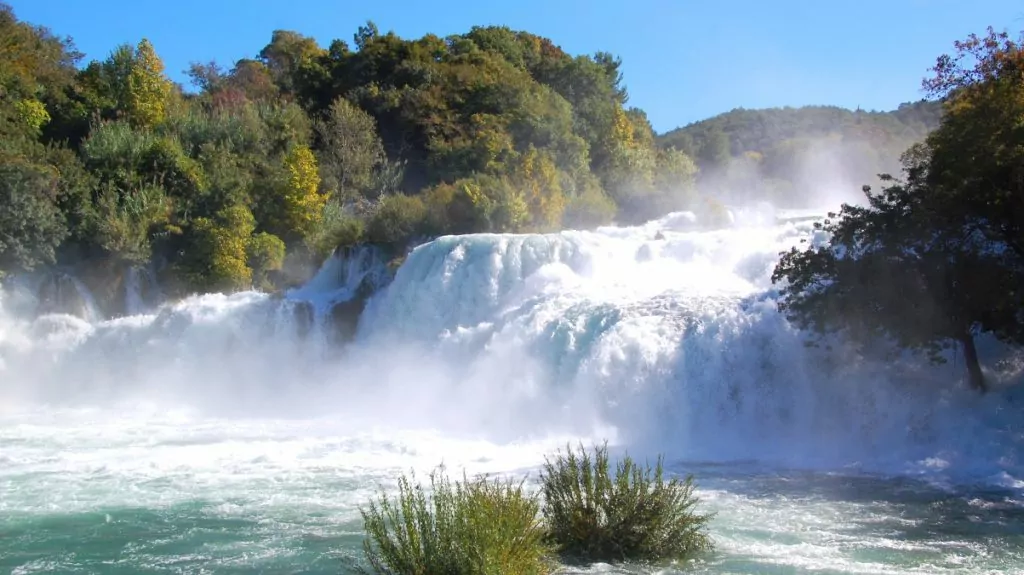
3. Croatia has over 1000 islands
Counting Croatia's islands is not easy, and the exact number depends on how you choose to define islands, islets, cays, etc. For example, we have seen the number 1244.

4. Zlatni Rat beach changes shape
Zlatni Rat (The Golden Beach) is located on the island of Brac near Split and has made several top lists of beautiful beaches. The beach is shaped like a tongue and changes shape depending on the wind and currents.
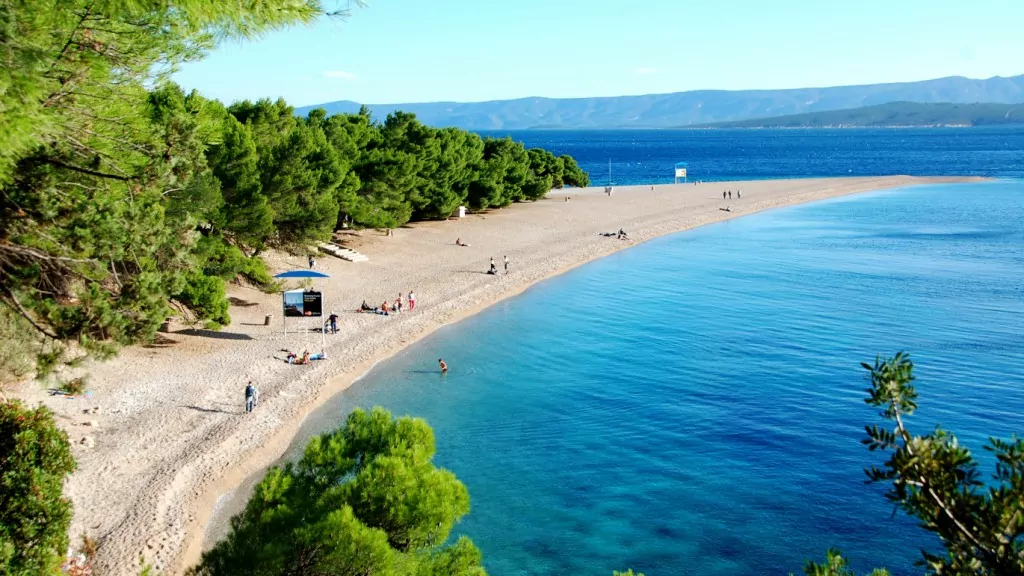
5. Pasjaca Plaza was voted the most beautiful beach in Europe in 2019.
In 2019, Pasjaca Plaza beach was named the most beautiful beach in Europe by the European Best Destinations tourism organisation. The beach is located just outside Dubrovnik.
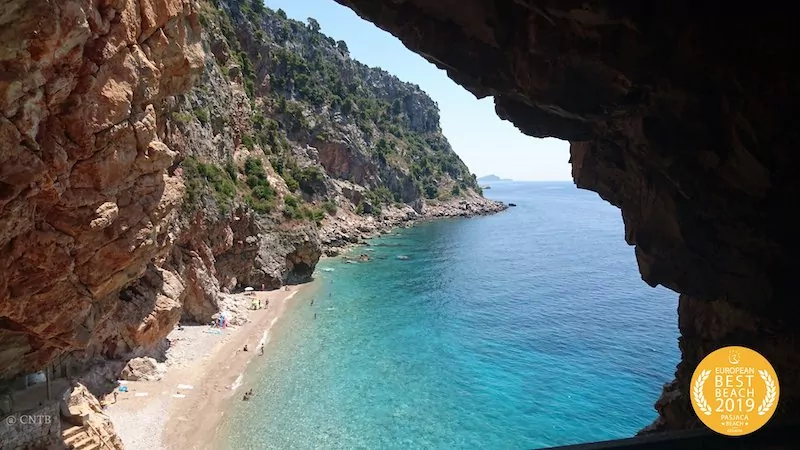
6. Dinosaurs have lived in Croatia
A long time ago, dinosaurs roamed the island of Veli Brijuni off the coast of Sweden. Istria. More than 200 footprints from several of the ancient giants have been found.

7. Neanderthals have lived in Croatia
Croatia has an impressive collection of Neanderthals. Many interesting finds have been made and you can visit the Neanderthal Museum in Krapina.

8. Vinkovci is one of the oldest cities in Europe
The Croatian city of Vinkovci is one of the oldest cities in Europe. The city has been inhabited for about 8000 years.

9. In Split there is a sphinx from 1500 BC.
In Split there is a sphinx from Pharaoh Tuthmosis III that dates from 1500 BC. It was the Roman emperor Diocletian who brought the sphinx from Rome when he built the palace in Split in 297 AD.

10. The world's smallest city is in Croatia
In Istria you will find the smallest city in the world, named Hum. There are about 20 inhabitants with a church, town gate, museum, restaurant, school and a president. With the Glagolitic writings on the city gate, it takes us to the 12th century in the Middle Ages.
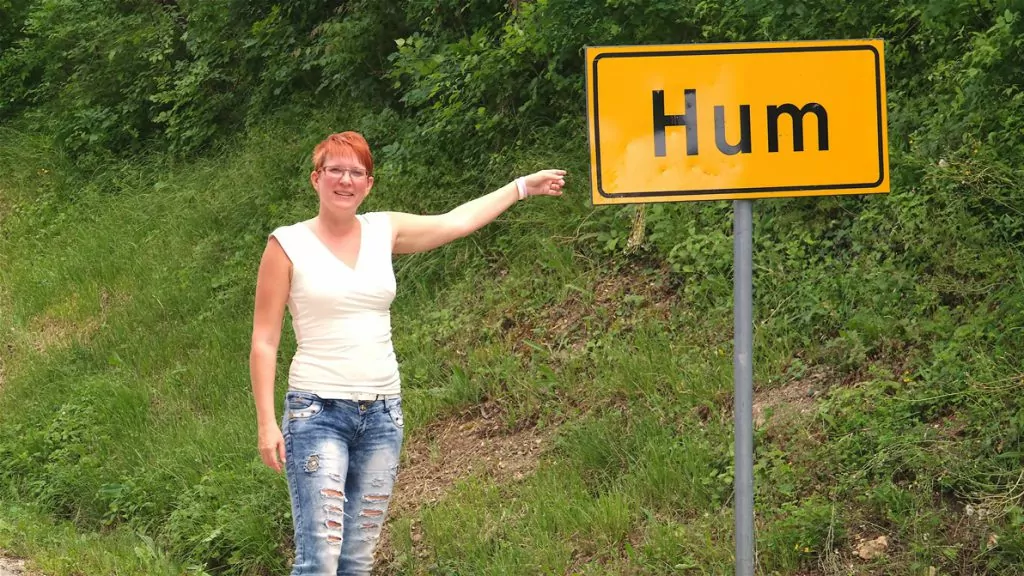
11. In Zagreb there are lantern lighters
In the old neighbourhood of Gradec in Zagreb there are still around 200 lanterns powered by LPG, which are switched on and off by a 'lantern lighter'.

12. in Zadar there is a "water organ"
I Zadar there is a water organ that plays by itself. They are played as the waves roll in and become tones that you can hear through an app and your headphones.

13. The world's shortest funicular railway is in Zagreb
In Zagreb, Croatia, you will find the world's shortest funicular railway. The track is only 66 metres long and runs between the upper and lower parts of the city.

14. The best preserved amphitheatre is in Croatia
Pula in Croatia is home to the best preserved amphitheatre from antiquity. Amphitheatres is the 6th largest in the world and could accommodate 26,000 people. Construction began by Emperor Augustus between 2 and 14 and was completed by Emperor Titus in 81, on the orders of Emperor Vesapasian who also built the The Colosseum in Rome.

15. Croatia is famous for truffles
Istria is famous for its white truffles. For years there was a record from 1999 with a truffle weighing 1.31kg, found in the famous truffle forest in Motovun.

16. The Michelin Guide recommends 63 restaurants
The Michelin Guide not only awards stars but also recommends restaurants. In Croatia, they recommend 63 good restaurants.

17. Zinfandel comes from Croatia
The Zinfandel grape is today best known for red wines from the United States. Originally, the grape comes from Croatia with the name Tribidrag and dates back to the 14th century.

18. The tick comes from Croatia
The cravat, which later became a tie, comes from Croatia. The Croatian word for tie is 'Kravata'.

19. Fountain pen invented in Croatia
Croatian Slavoljub Penkala invented and patented the fountain pen in 1907. The invention immediately became immensely popular.

20. World's first torpedo built in Croatia
Croatian Ivan Vukic began developing the world's first torpedo in the harbour town of Rijeka in the former Austro-Hungarian Empire. The invention was further developed by Englishman Robert Whitehead.

21. Game of Thrones was filmed in Croatia
Croatia is one of the countries where the hugely popular TV series was filmed. Game of Thrones. Scenes from the magical city of Quarth and the Red Keep have been filmed around Dubrovnik.

22. Croatia has the shortest national costume in the world.
On the island of Susak, women wear a folk costume that can be considered the first mini-dress. The short costume, kamizoti, consists of five or six very short skirts.
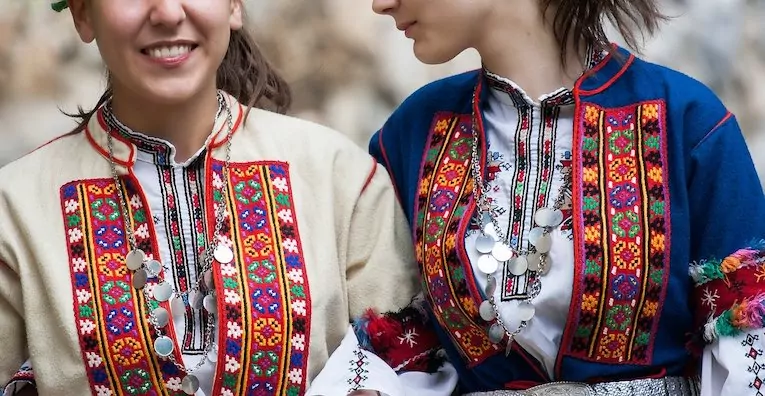
23. Croatians dress up for "Špica"
Špica is a social phenomenon that is said to take place on Saturdays around Fig, Restaurant Street and around Bogoviceva at the square between 10:00-15:00. Those who want to be seen can put on their coolest outfit and head out into the city to be seen and to see others.

24. Croatia welcomes naturists
The first naturist beach in Croatia opened in 1934 on the island of Rab, after the reigning monarch Edward VIII threw off his clothes and went skinny dipping. Today there are around 100 naturist beaches and at least 14 naturist campsites.

25. Marco Polo may have been born on the island of Korčula
Marco Polo is often thought to have been born in Venice, but there is evidence that he was born on the island of Korčula (which belonged to the Republic of Venice in the 13th century). There are still people with the surname Polo on the island today.

26. Nikola Tesla comes from Croatia
Nikola Tesla was born in 1856 in Smiljan, Imperial Austria (now Croatia). He was one of the most significant contributors to the advent of commercial electricity.

27. Football player Luka Modrić was born in Zadar.
Luka Modrić was born in 1985 in Zadar, Yugoslavia (now Croatia). He was named the best footballer in the world in 2018 and has won the Champions League four times with Real Madrid.
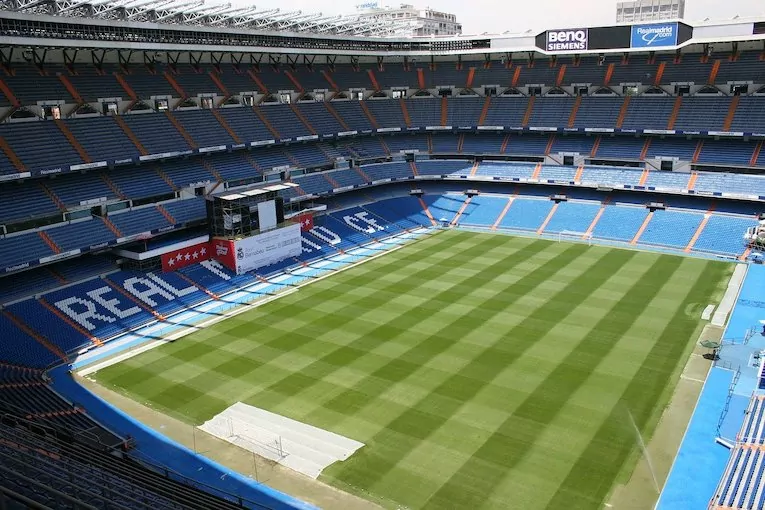
28. Footballer Davor Šuker was born in Osijek.
Davor Šuker was born in 1968 in Osijek, Yugoslavia (now Croatia). During the 1998 World Cup, Šuker was the nation's hero, almost taking Croatia to the World Cup final, and was named the top scorer.

29. Dalmatians from Croatia
Dalmatians are a dog breed with Croatia as their official home country. Croatia is also home to the province of Dalmatia.

30. Professor Balthasar comes from Croatia
Remember the TV series about Professor Balthazar, who uses a universal machine to solve his friends' problems? The series was created by Croatian animation studio Zagreb Film and animator Zlatko Grgić.


More interesting facts about Croatia
- Croatia's national anthem name Lijepa naša domovino (Our beautiful homeland)
- The world's smallest cathedral are in the old kingdom of Nin
- Highest mountain in Croatia is called Dinara and is 1830 metres high.
- The longest and largest river is Sava which is 990 km
- Lake Vrana is the largest lake and is located south of Zadar.
- The national flower of Croatia is an iris
- West coast of Croatia is the Adriatic Sea
- Biggest sports is football and handball in Croatia and Picigin, which is incredibly popular at home.
- There are over a thousand Croatian endemic species (species found only in Croatia)
- Did you know that There is a vertebrate animal in Croatia called the elm. It lives in caves and is an amphibian.
- Flag? The flag of Croatia is a tricolour consisting of three equal horizontal (horizontal) stripes in red, white and blue. In the centre is the Croatian coat of arms. The flag has been used in various forms since 1848 but was adopted in its current form on 21 December 1990.
- The historical symbol of the Croats, a chequered red and white shield probably used by Croatian rulers since the 10th century. The stylised crown that crowns the large coat of arms has five smaller historical arms, four of which represent different parts of the country.
- In Croatia, the coat of arms is called popularly known as šahovnica (chessboard) which comes from the Croatian word for chess, šah.
- Croatia's neighbours borders Bosnia and Herzegovina and Serbia to the east, Slovenia to the north, Hungary to the north-east and Montenegro to the south. To the west and southwest, the Adriatic Sea forms a maritime state border with Italy.
- Croatia extends from the extreme eastern edge of the Alps in the north-west, to the Pannonian plain and the banks of the Danube in the east. Its central part covers the Dinaric mountain range, and the southern part ends on the Adriatic coast.
- Climate zones: Croatia has three different climate zones, with a moderately warm rainy climate dominating in the interior of the country. On the highest peaks, there is a snowy forest climate, and along the Adriatic coast there is a pleasant Mediterranean climate with many sunny days. Summers are dry and hot, winters mild and humid.
Surprising facts about Croatia?
Were these perhaps some surprising facts about Croatia, or did you already know everything? Do you have any more exciting facts about Croatia to share?

Facts about Croatia
- Capital city: Zagreb, just over 800 000 inhabitants
- Population: Around 4 million (2019)
- Language: Croatian 90.42 % (many also speak English)
- Statehood: Republic
- Second largest city? Split
- Regions: central Croatia, Slavonia, Istria and Dalmatia
- Largest cities: Zagreb, Split, Rijeka, Osijek and Zadar
- The national flower of Croatia: Iris
- EU: 1 July 2013
- Currency Croatia: Kuna (HRK) introduced on 30 May 1994
- The patron saint of Croatia: St Joseph
- Religion: Christianity
- National Day: 25 June
- Time difference? None
- Country number? 385
- Independence Day? 8 October
- Emergency number? 112
- El? As in Sweden
- Water? Drinkable as in Sweden
- Price point? Cheaper than Sweden
- Think about? In the service sector as waiters, 5-10 % tips apply.
Information on Croatia for travellers

More fun facts

Historical facts about Croatia
EARLY HISTORY
More than 200 dinosaur prints from the Mesozoic era, have been discovered at four sites on the island of Veliki Brijun in Croatia. 145 to 65 million years ago, predators walked here.
Around Croatia it has been found following excavations, finds from prehistory, Neanderthal man (350,000 years ago), stone, bons and the Iron Age.
In antiquity (3000 BC - 476 AD).), today's Croatia was inhabited by various Illyrian tribes, including those from Egypt.
Year 300 BC the Greeks arrived and built settlements on Vis, Korcula and Hvar. The Romans took control of Croatia and many built their summer palaces in Croatia.
Over time and at the end of 400 BC barbarian tribes were able to destroy Roman civilisation in Croatia. The Croats (formerly Slavs) settled in the region in the early 7th century and lived on the Balkan Peninsula.
A new kingdom came into being in 925 under King Tomislav. The independent Croatian kingdom lasted until 1102, when it entered into a union with Hungary after many wars.
In 1526, the strong Hungary against the Ottoman Turks and Croatia was forced to leave the union. Croatia eventually formed a new union with Austria-Hungary, which lasted until the First World War.
1900 TALET
In 1918, the Slovenes, Croats and Serbs, which was later renamed Yugoslavia in 1929. When Germany and Italy attacked Yugoslavia in 1941, the state was dissolved.
Almost immediately a strong resistance movement was formed, led by communist leader Josip Broz "Tito", which enjoyed broad popular support.
After the end of the Second World War a new communist Yugoslavia was formed with Tito as 'president for life'.
Tito ruled with a strong hand by using political repression and secret police to stop any separatist sentiment, with the official motto of the new country being "Brotherhood and Union".
Due to the fact that Yugoslavia was not part of the Warsaw Pact, having severed political ties with the Soviet Union in 1948, it was by far the most openly socialist country in Europe.
Its citizens enjoyed more civil liberties. and a higher standard of living compared to the rest of the communist bloc.
After Tito's death in 1980 the weakening of political repression led to a period of political instability. The first free elections were organised for the first time in 45 years.
In these elections, nationalist alternatives won power in all Yugoslav republics, which led to a rise in inter-ethnic tensions, culminating in Croatia and Slovenia declaring their independence from Yugoslavia in 1991.
This led to an open war in newly independent Croatia and later in Bosnia and Herzegovina, which declared its independence in 1992.
The war ended four years later in 1995, with the decisive Croatian victory in Operation Storm, bringing peace to both countries. Operation Storm is celebrated as Thanksgiving Day in Croatia on 5 August each year.
CURRENT
Stretching along the Adriatic Sea and a stone's throw from Central Europe, Croatia is a country defined by its rich cultural heritage.
Today, history is mixed with a youthful feeland a vibrant energy that has proved irresistible to those seeking diversity.
Breathtakingly beautiful natureEndless coastline, diverse gastronomy, adventure, sports and wellness can be enjoyed all year round.
Whether you are exploring the old city of Dubrovnik, or hopping around between islands in the Split archipelago, searching for truffles in Istria or paragliding over the lakes of Plitvice.
Perhaps you are searching through the streets of Zagreb. and hidden passages, bird watching in Kopacki rit, partying on Zrce's beach in Novalja or spending time with the family on the beach in Zlatni Rat, there really is something for everyone in Croatia.















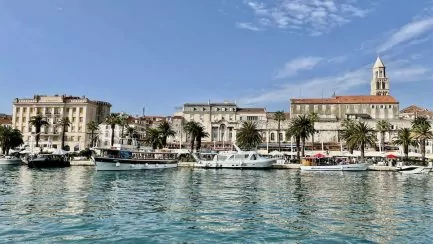

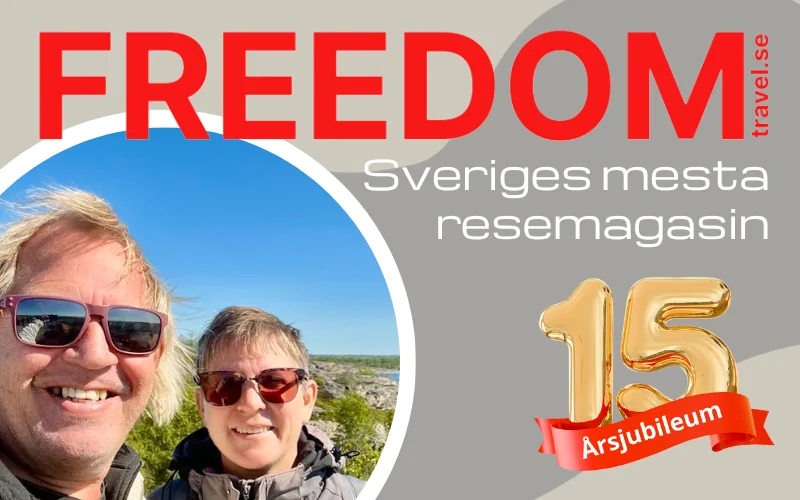


Matts Torebring says:
Wonderful pictures! Of course Croatia is absolutely fantastic, not least the pure fine turquoise coloured water. We were there probably six or seven years in a row, in the early 2000s. We went ferrying with the motorhome on board, in the Croatian archipelago, we walked around Dubrovnik, up on the city wall, this gave unforgettable memories. We found Camping Nevio, Orebic, which was a first class campsite, far above the usual, and Camping Trogir, which was quite good. Otherwise, the campsites left a lot to be desired. They cannot be compared to the French castle campsites, which we found when we embarked on new trips to other countries. The reason we haven't continued travelling to Croatia is simply because we wanted to discover new countries.
01 March 2020 - 8:17
Helena says:
Croatia is really nice, I agree! But of course there is more to discover in Europe! As for the campsites, we think that many in Croatia nowadays are almost TOO nice, haha, because the prices then go away 😉.
01 March 2020 - 16:25
Anette says:
We have only been there a couple of times but enjoyed it very much.
Clean, beautiful water and lovely rocks are my favourite memories.
We have been to a concert in the amphitheatre in Pula, it was great.
You have found much, varied information ?
01 March 2020 - 9:08
Helena says:
How cool to experience a concert in the amphitheatre! We have also visited it, but not for a concert ...
01 March 2020 - 16:26
Husisblogg says:
Thank you for nice facts about this beautiful country.
Some of it was known and seen by the owners, but some was completely new.
The owners have planned to go to Croatia this year if they get the holiday they want. But now other doubts have arisen because of Corona.
01 March 2020 - 9:26
Helena says:
We are quite calm in relation to the coronavirus (although we are of course following developments closely).
01 March 2020 - 16:27
Ann says:
You don't seem to be properly informed about Corona... more cases are found in Sweden, Germany, Switzerland, etc. than in Croatia.
01 March 2020 - 22:55
dianasdrömmar says:
Wonderful pictures, have been to Croatia several times and would love to go back hug Diana
01 March 2020 - 9:49
Helena says:
Very nice in Croatia! 🙂
01 March 2020 - 16:27
bmlarsreseblogg says:
Many fun facts about beautiful Croatia. We saw most of it on our 2018 trip even though we didn't go to Zagreb, which seems to be a nice city.
01 March 2020 - 10:35
Helena says:
Zagreb is a pleasant and "tangible" capital!
01 March 2020 - 16:28
BP says:
So the Tesla electric car is named after a Croat. I didn't know that. Thank you so much for including the football players as well. I recognise them of course, but didn't know where exactly they were born.
01 March 2020 - 17:33
Tompa says:
So wrong. Nikola Tesla was a Serb born in Croatia.
01 March 2020 - 18:12
Rajko Ostojic says:
It is mostly true about nature but there are more historical links between the Uskoks - Dalmatians and Vikings, do some research...
There are three areas about the size of Skåne - Lika, Banija and Kordun - that are unpopulated because the Croats kicked 400,000 Serbs off their thousands of years old land. ....
An interesting concentration camp Jasenovac type Auschvic with about 1 million victims and Kerestinec conc. Camp for children unique in the history of the whole world with about 25 000 children during the Second World War....
Welcome to "democratic" Croatia !!!!?????!!!!
02 March 2020 - 0:55
Nadja says:
Well, how jealous we are! Of course, the Croatians have made a lot of mistakes in their days but, had I been Serb, I would not dare to comment on such things. The Croatians are still healing their wounds after that last look. The host knows. By the way it was the country Croatia it was about not the Croats themselves. Regards. honourable neighbour.
02 March 2020 - 17:03
Pelle says:
Last time I checked, it was Serbia that was the aggressor and attacked Croatia and not the other way round. You also attacked Bosnia and Herzegovina, Kosovo and Montenegro, needless to say something more about the Serbian megalomaniacal attitude towards its neighbours.
PS. everything you wrote above is made up and not supported by facts at all. So stop spreading lies
06 July 2021 - 22:43
Marias memoarer says:
Fun facts? Speaking of Marco Polo, there is a series about him on netflix that I am watching? In Croatia I have been to Dubrovnik, Split and the islands of Šolta and Lokrum.
03 March 2020 - 8:49
Lena - gott för själen says:
Wow, what research you have done! Croatia is a lovely country. Have been there a couple of times. And then we have one of those black-spotted four-legged things here at home 😉.
Hug Lena
04 March 2020 - 6:04
Anonymous says:
Hey it's nice in kroatsine
03 September 2020 - 13:34
Anna says:
hi hi, i love croatia and am half croatian, and know croatian, book!
21 January 2021 - 9:03
Pelle says:
Nikola Tesla was a Croat and never a Serb, but he was born into an Orthodox family, which does not automatically mean that he is a Serb. Not all Croats are Catholics, there are many who are Orthodox. Please do not distort the facts. Thank you very much
06 July 2021 - 22:44